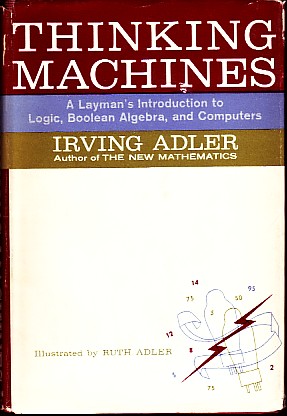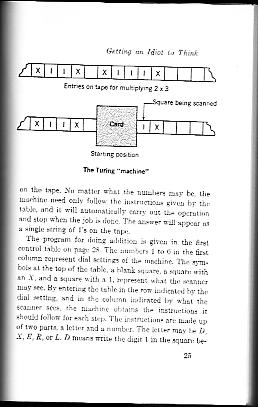The Turing Machine Goes Public
December 2, 2007
New York, N.Y.
Many "how computers work" books written for a general audience contain a discussion of the Turing Machine. I never quite saw the point of this. Although the Turing Machine is great for examining the concepts of computability, I don't think it helps at all in understanding the actual mechanism of the computer. That's why I didn't include an extended discussion of the Turing Machine in my own "how computers work" book, Code: The Hidden Language of Computer Hardware and Software.
Now I'm making up for that. My forthcoming book, The Annotated Turing is all about the Turing Machine, including how this little invention emerged from the rarefied field of mathematical logic to become a tool for understanding ourselves and the universe in which we find ourselves.
But how did this happen? Who first picked up on the concept of the Turing Machine and disclosed it to the general public? Most of the early references are for rather specialized audiences, such as the famous Warren McCulloch and Walter Pitts 1943 article "A Logical Calculus of Ideas Immanent in Nervous Activity." Norbert Wiener discusses Turing's work in his 1948 book Cybernetics, Or the Control and Communication in the Animal and the Machine, and the Turing Machine itself featured prominently in Stephen Kleene's Introduction to Metamathematics (1952) and Martin Davis's Computability and Unsolvability (1958), but I was curious about more popular treatments.
When, I wondered, did the Turing Machine make its first appearance in a book or article not intended for mathematicians or scientists?
After exploring my own collection of antique computer books and sorting through stuff that turns up in Google Book Search, I am 95% certain that the Turing Machine was first presented to the general public in the 189-page book Thinking Machines: A Layman's Introduction to Logic, Boolean Algebra, and Computers by Irving Adler and published by the John Day Company in 1961:


Notice the vacuum tubes in the lower-right corner of the cover! Adler's explanation of a Turing Machine as a function calculator that reads and writes strokes is apparently derived from Kleene's or Davis's book, although his brief bibliography doesn't list either.
According to the Wikipedia entry on Irving Adler, he is now 94 years old and the author of 56 books. More biographical information appears here.
If anybody knows of an earlier book or magazine article featuring a discussion of the Turing Machine for the "layman" I'd love to hear about it.

|
Coming May 19, 2008! Available for Pre-Ordering |
||
| Wiley | Amazon US | Amazon Canada | |
| Amazon UK | Amazon Deutsch | ||
| Amazon Français | Amazon Japan | Blackwell | |